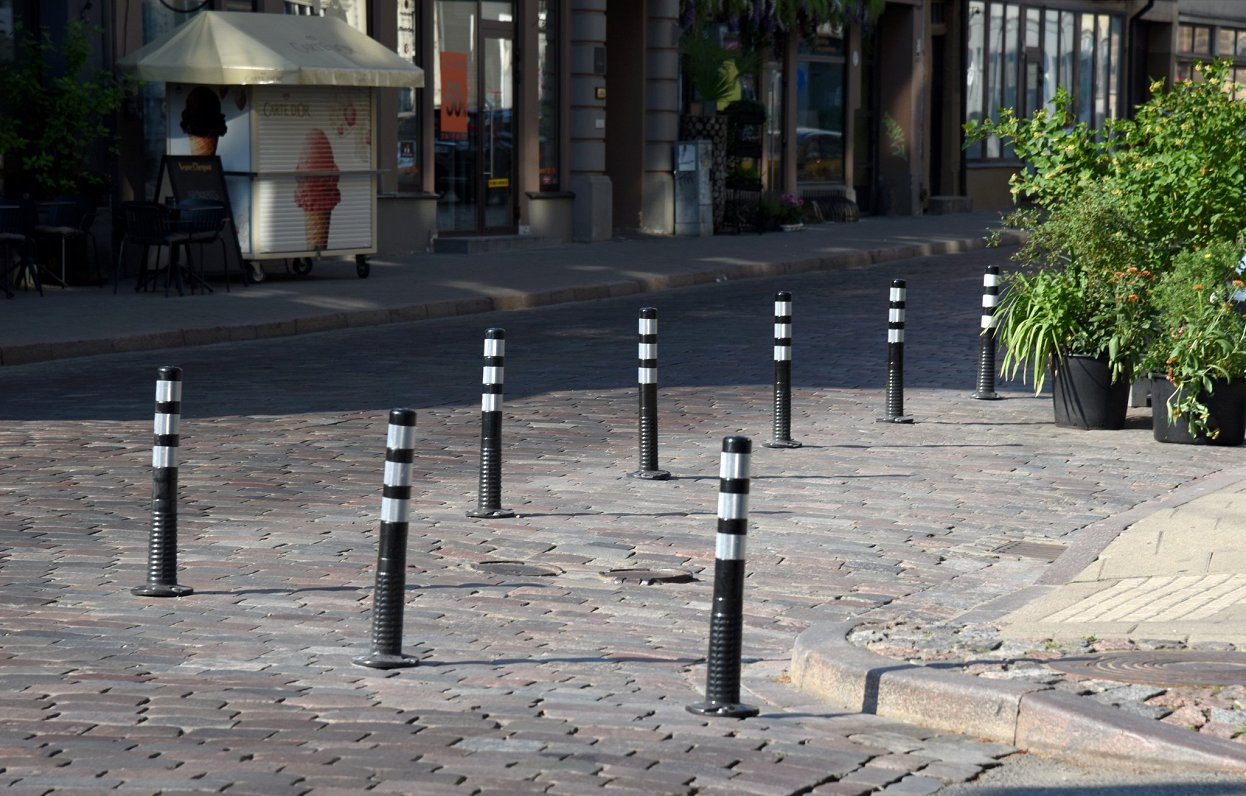LSM already reported that the newly installed bicycle lanes in the center of Rīga, for example, on Bruņinieku Street, have caused businesses to reconsider their location due to delivery trouble. Also, the medics of the Emergency Medical Service (NMPD) complained that valuable time must be spent avoiding the streets with bicycle barriers because they are no longer able to navigate traffic.
Liene Cipule, head of the Emergency Medical Service, said that the service had conducted a team survey to understand the places where it was difficult to drive after the poles had been installed. “We have separate places where we will currently carry out additional research to agree on whether the solution should be changed in the specific places,” Cipule said.
Riga Vice Mayor Vilnis Ķirsis (New Unity) indicated that the service representatives will be invited to the meetings at the Transport Department, where changes to street infrastructure and repairs are discussed with the police and firefighters. “We agreed that there are issues that could be reviewed at expert level, [..]. We're open [to a conversation] anyway,” said Ķirsis.
As one of the problematic streets, NMPD drivers have named Bruņinieku Street, where there are bike lanes on both sides of the street, one of them has bars and the other one has poles.
LTV observed that, for example, the Gaso emergency car had no problem driving over the barriers. But the situation may be different if there is intense traffic in the street. Vice Mayor Vilnis Ķirsis said that services should also be allowed to cross the barriers if needed.
Otto Ozola, representative of the City for People organization, believes that the new bicycle lanes are even helping emergency services because they can be used to overtake cars. “There were parking spaces in the past, and the place could not be used. The lane creates conditions that emergency transport can go not only in the direction where the [other cars] are driving, but, if they need it, they can even move that street in the opposite direction,” Ozola said.
The head of NMPD, Liene Cipule, said that there may be a need for changes to the driver briefing in order for brigades to understand how to navigate the new traffic safety solutions. She believes that in most places drivers will be able to adapt to the infrastructure. “We need time, because perhaps the fact that maybe there was no readiness for these changes so there were negative feelings. But there is a desire on all sides to deal with this situation,” Cipule added.






























